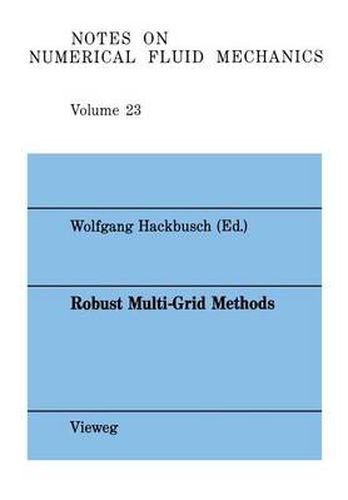Readings Newsletter
Become a Readings Member to make your shopping experience even easier.
Sign in or sign up for free!
You’re not far away from qualifying for FREE standard shipping within Australia
You’ve qualified for FREE standard shipping within Australia
The cart is loading…






This title is printed to order. This book may have been self-published. If so, we cannot guarantee the quality of the content. In the main most books will have gone through the editing process however some may not. We therefore suggest that you be aware of this before ordering this book. If in doubt check either the author or publisher’s details as we are unable to accept any returns unless they are faulty. Please contact us if you have any questions.
In full multigrid methods for elliptic difference equations one works on a sequence of meshes where a number of pre- and/or postsmoothing steps are performed on each level. As is well known these methods can converge very fast on problems with a smooth solution and a regular mesh, but the rate of convergence can be severely degraded for problems with unisotropy or discontinuous coefficients unless some form of robust smoother is used. Also problems can arise with the increasingly coarser meshes because for some types of discretization methods, coercivity may be lost on coarse meshes and on massively parallel computers the computation cost of transporting information between computer processors devoted to work on various levels of the mesh can dominate the whole computing time. For discussions about some of these problems, see (11). Here we propose a method that uses only two levels of meshes, the fine and the coarse level, respec- tively, and where the corrector on the coarse level is equal to a new type of preconditioner which uses an algebraic substructuring of the stiffness matrix. It is based on the block matrix tridiagonal structure one gets when the domain is subdivided into strips. This block-tridiagonal form is used to compute an approximate factorization whereby the Schur complements which arise in the recursive factorization are approximated in an indirect way, i. e.
$9.00 standard shipping within Australia
FREE standard shipping within Australia for orders over $100.00
Express & International shipping calculated at checkout
This title is printed to order. This book may have been self-published. If so, we cannot guarantee the quality of the content. In the main most books will have gone through the editing process however some may not. We therefore suggest that you be aware of this before ordering this book. If in doubt check either the author or publisher’s details as we are unable to accept any returns unless they are faulty. Please contact us if you have any questions.
In full multigrid methods for elliptic difference equations one works on a sequence of meshes where a number of pre- and/or postsmoothing steps are performed on each level. As is well known these methods can converge very fast on problems with a smooth solution and a regular mesh, but the rate of convergence can be severely degraded for problems with unisotropy or discontinuous coefficients unless some form of robust smoother is used. Also problems can arise with the increasingly coarser meshes because for some types of discretization methods, coercivity may be lost on coarse meshes and on massively parallel computers the computation cost of transporting information between computer processors devoted to work on various levels of the mesh can dominate the whole computing time. For discussions about some of these problems, see (11). Here we propose a method that uses only two levels of meshes, the fine and the coarse level, respec- tively, and where the corrector on the coarse level is equal to a new type of preconditioner which uses an algebraic substructuring of the stiffness matrix. It is based on the block matrix tridiagonal structure one gets when the domain is subdivided into strips. This block-tridiagonal form is used to compute an approximate factorization whereby the Schur complements which arise in the recursive factorization are approximated in an indirect way, i. e.